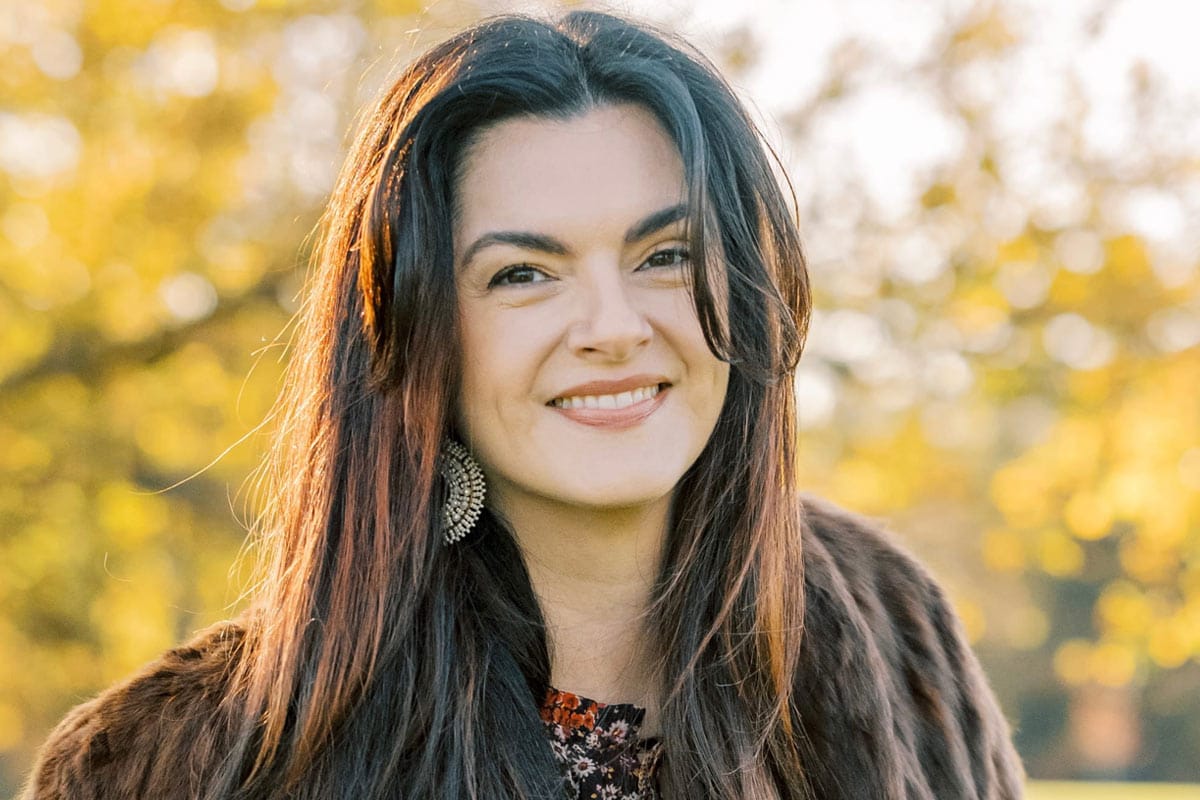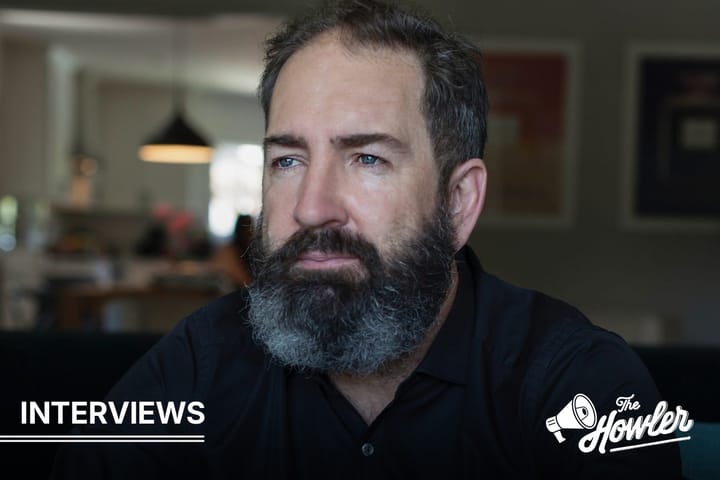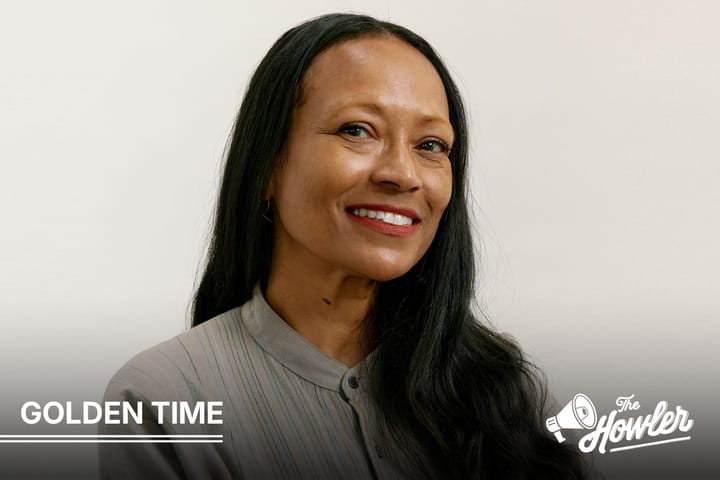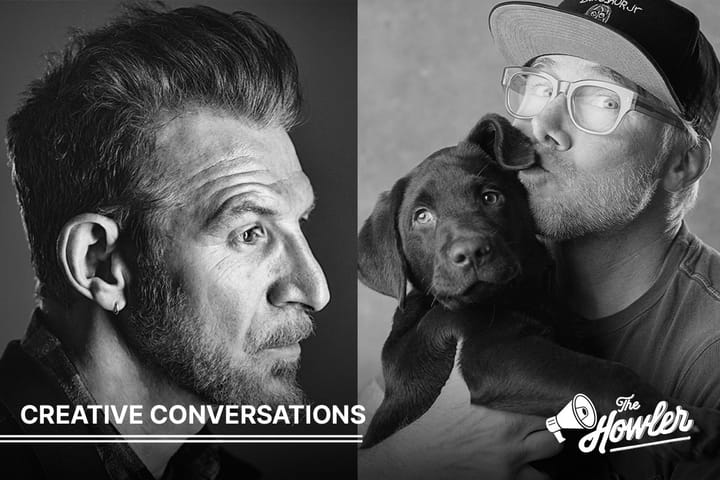AREA23’s Chinkara Singh on the Value of Creative Producers

By Anthony Vagnoni & Chandler Atton
At the most recent Simian Advertising Heads of Production roundtable, this one hosted by 1Park9, we heard a wide range of really smart insights from our assembled production experts. One of the standout participants was Chinkara Singh, Senior VP, Group Director, Creative Production at the IPG healthcare agency AREA 23, which was just named Healthcare Agency of the Year at the Cannes Lions Festival.
Chinkara’s title telescopes a topic she spoke about passionately, which is the value that creative producers (note the adjective preceding ‘producers’) bring to the making of brand content. From the initial concepting stages through to planning, strategizing, bidding, awarding, shooting, finishing and delivering, the steady hand and experienced leadership of a seasoned producer can be invaluable, she strongly suggests -- while quietly underscoring that in many instances, this contribution is being overlooked, underused and underfunded.
Chinkara certainly knows of which she speaks. She got her start in agency production at BBDO in New York, and has worked at such agencies as Digitas, JWT, 360i, and mcgarrybowen, as well as on the client side for Meta and Mattel.
In this wide ranging Q&A, Chinkara spoke with The Howler about the impact a creative producer brings to the process, the importance of exposing younger producers to all aspects of the production process and the value of mentoring in an increasingly DIY world. Here’s what she had to say.
How did you get into agency production? What path led you to your first agency job?
Chinkara: Completely self-made, I grew up with a lot of love, not a lot of money, and the kind of grit that comes from figuring things out on your own. An Executive Producer came to speak at our high school, and I asked to volunteer at the TV station. That job led to seeking a degree in Radio / TV and Film at the University of Central Florida on a full scholarship, where I excelled in film law and production. Arriving in NYC with a reel and headshot, I pounded the pavement until I got an interview from a place I’d never heard of: BBDO. I showed up early, in a suit, with my half-inch reel, and Regina Ebel gave me my first job in production and opened the door to everything that came after.

Were there any key people who mentored you as you were coming up in the ranks? If so, who had a big impact on your professional advancement?
Chinkara: So many! BBDO was full of absolute legends. I learned from Regina, David Frankel, Bob Emerson, Grant Gill! I arrived early, stayed late, soaked up everything advertising; those early years shaped my future.
The biggest impact on my professional advancement by far, has been Tim Hawkey, Chief Creative Officer at AREA 23 and IPG Health Canada. He’s smart as hell and gave me a platform to create a fearless group and push beyond any production boundary. He’s a leader I genuinely enjoy following.
AREA 23's "Magnetic Stories" was a Grand Prix winner in Cannes this year.
At the Simian roundtable you spoke a lot about teaching younger producers the skills needed to be successful. How are you achieving this at AREA 23?
Chinkara: Gone are the days of sitting on the floor of your EP’s office, organizing bids, eavesdropping on negotiations, and running copy to the VO session. That kind of osmosis doesn’t happen in the same way anymore, so we had to reinvent mentorship for a field-based, hands-on career.
It starts with trust. I know the personal values of each producer on my team. That’s the foundation. Our one-on-ones are consistent and focused, always moving the ball forward. We build real partner relationships, in person. I hire filmmakers and storytellers, and the younger producers lean on each other; they have their own group chat, they crew up for side films, and they push each other in the best ways.
As leadership, we carve out time for real exposure. Listening in on client calls, voice records, being on set. At AREA 23, the teamwork is real. I can call a senior creative or account lead and ask them to bring a producer under their wing on a shoot — and they do. That’s what makes this place special.
What value does being part of IPG Health provide when it comes to having resources or tools that can help producers be better at their jobs?
Chinkara: IPG Health has a strong, open line of communication across the Agency Creative Production leadership, which means our producers can move fluidly between opportunities in the network. If someone wants to level up a specific skill, we find the project, the partner, or the tool to help them do it.
At AREA 23, our creative producers use their superpowers to affect change. Half the time, they’re the ones creating the tools that get shared across the system. That kind of innovation doesn’t happen in a silo. In a vast and versatile eco system like IPG Health, there are plenty of opportunities to find a corner to own.
We’ve heard agency producers talk about not being brought in at the earliest stages of a campaign’s planning or development. What prevents this from happening? How can production heads work around this resistance?
Chinkara: We’re two parts that hold equal weight: creative and production. One doesn’t thrive without the other. At AREA 23, our clients know our producers by name. They see us as integral to the creation of great work, not just the execution of it. That only happens when great teams value the craft of how.
Creative production is a niche of experts in all things related to ‘how’. If someone in the room is asking, “How are we going to pull this off?,” the answer is almost always: bring in a creative producer. We know how. We know who.
One of my favorite takes on this came from a conversation between CCO Rafael Rizuto and CPO Tim LeGallo of Ogilvy. They said, “Good agencies are defined by the ideas they have, but great agencies are defined by the ideas they produce.” I couldn’t agree more. The work gets stronger when production is valued as an extension of the creative department. Our clients need to see that too — and the earlier we’re in the room, the tighter the work becomes.

What impact do you feel the decoupling of production departments from brand agencies, and the move towards combined holding company-wide production units, has had on the role of the agency producer? Has the perception of a producer’s value changed in any way?
Chinkara: My hope is that the creative producer remains the keeper of the brand story through the camera lens; the history, the values, the storytelling, and the craft. When you're trying to build a real connection between a brand and its audience, that’s not just about execution. There are layers to the story, and they live behind the lens too.
Execution is just one piece of our skillset. Creative producers are alchemists assembling the right people, tools, and ideas to bring stories to life in ways that are meaningful, distinct, and unforgettable. It kills me when everything starts to look the same. That’s one downfall that can happen when the craft of production is an afterthought.
That’s not to say different production models don’t bring different strengths, they do. But as a service-oriented discipline, we have to be louder about our value. We don’t just make things — we shape them, evolve them, and protect the creative through every twist of the process.
AREA 23 created "In Transit" for NYC's MTA in support of Transgender Visibility Day.
How can you convince clients that their work will benefit from allowing producers to be assigned to jobs early in the process? Similarly, do outside production consultants see the value they bring to the overall process in terms of efficiency, planning and cost savings?
Chinkara: Every outside production consultant I’ve worked with feels the value of an excellent creative producer. For example, working with MRA is an extremely fulfilling partnership. Our work together is very streamlined, as we partner deftly on the client’s behalf. The best way to convince a client of our value is to present smart choices with each pro and con, and show them how hard we work to tell their story. And do that over and over again.
Additionally, all the creative problem solvers should be in the room together from the start. The earlier you bring in a problem solver, the sooner we find a solution; that’s true for strategy, creative, and production.
How do you advise the younger producers on your staff to stay relevant? How can they ensure that their contributions are critical elements that can’t be substituted or overlooked?
Chinkara: I ask young producers to always come with an opinion. That doesn’t mean they need all the answers, but they need to be thinking, actively engaged, curious, and willing to speak up. I try to push them outside their comfort zones to learn something new. I bring back information from conferences to dissect and apply to our work. I tell them to meet with all reps, in person, and watch as many reels as they can. I challenge them to find good commercials and ask, why are they good? They need to find weird shit and find out how it was made. Dig into Instagram and DM experts in spatial design, if that’s what you want to know about it. Own that part of the room! Become an expert. I want to go to you because you’re the person who can tell me how that thing works. You have a friend who has a vegetable orchestra? Yeah, I want to meet that friend!
How can you get more younger producers on sets, or in edit or VFX sessions, so they can learn how things are done? Is cost the sole factor in deciding whether younger talent can participate in these kinds of learning experiences?
Chinkara: It’s gotten harder. We don’t have a lot of hours on jobs. We don’t have a lot of training hours, either. If there’s a New York shoot, I’m the first to ask to get a younger producer there. Usually the answer is yes, but you have to be relentless to train them. Edit is easier, thankfully for our post production partners. Producers can tackle multiple workstreams from the edit and watch and absorb; same with VFX. Then they’re in the room with the artist and can ask questions. You don’t learn this job in theory. You learn it by being there.

Everyone’s dancing around the issue of AI and its impact on the making of ad content. How are you having your people address this? How do you see it impacting the role of the agency producer in the short term?
Chinkara: I’m genuinely excited about AI. I love change. I love the future. I love new tools that challenge us to think differently.
The first thing I did was teach our producers how to bid an AI job. That process will absolutely evolve, but we had to start somewhere — and I wanted them to feel confident navigating those conversations right away. Now we share learnings weekly: what’s working, what’s emerging, and what questions we still need to ask.
Creative producers have always been translators of possibility — and that won’t change. If anything, AI will only expand what’s possible. Our role is to stay curious, stay ethical in AI decisions, find like-minded partners we trust with AI prompting, and stay close to new platforms.



